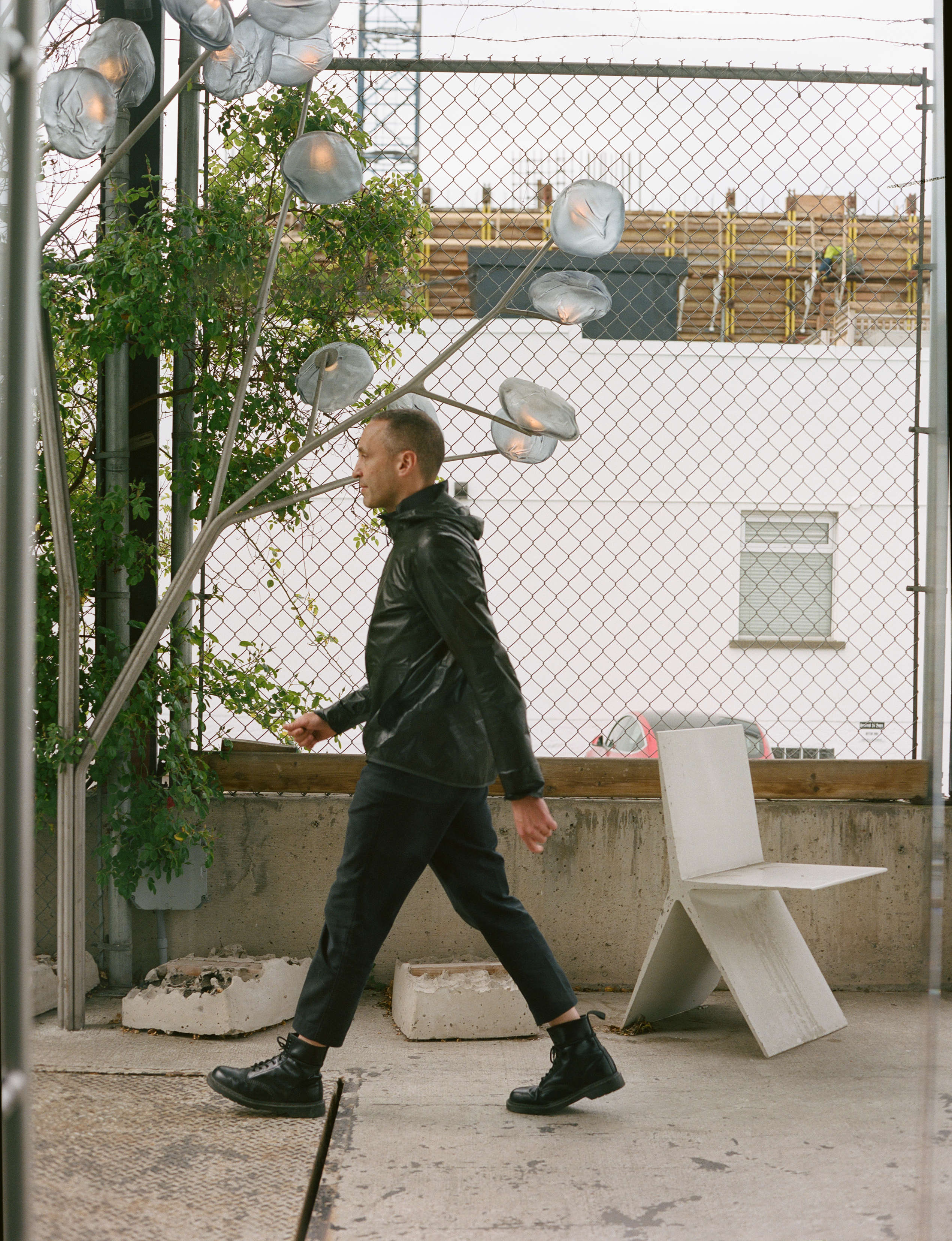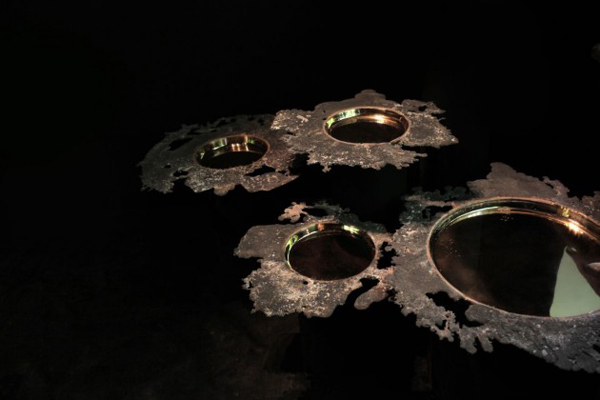

How central is this dichotomy to your practice and why? The unique manufacturing process you have invented paradoxically means that each piece is a product of both design and chance, precise calculations and pure unpredictability. How different are the finished pieces from your initial vision?
#Omer arbel how to#
Learning how to work with the materials also took a lot of time I would say, a year, maybe a year and a half. How much research and experimentation went into the series?Ĭhanging the expansion coefficients was difficult and took many iterations. It was only a matter of time before it occurred to me to see what happens if we reverse the relationship and deliberately deviate from the expansion coefficients, so the materials reject each other rather than fuse, which is what we tried with 113.
#Omer arbel series#
Some novel forms emerged from a series of explorations, first with copper and glass on their own (series 19 and 28) and later on, in tandem (series 76, 84 and 93). How did the inspiration for the 113 series come about?įor years I have been working on ideas resulting from the basic first step of matching the coefficient of expansion in glass and copper in terms of how one material transforms as a consequence of heat, and air flow, and affect the other. (Answers have been condensed and edited for clarity.)

Yatzer recently caught up with Arbel to talk about his latest series and his multidisciplinary practice. This technique not only creates uniquely shaped vessels with an unpredictable variation but also produces an iridescent finish on the outside as the hot metal doesn’t come into contact with oxygen, which makes for an uncanny contrast with the blackened texture of the oxidized interior. As each piece cools, the glass shatters off, leaving a metallic shadow of itself due to the calculated discrepancy in the coefficients when it comes to the expansion of the two materials. Part of an ongoing series of experiments exploring the relationship between copper alloys and glass, the 70 pieces on display at the Carwan’s industrial new space were made by pouring a liquid copper alloy inside glass vessels that have just been blown. No less extraordinary is the process underpinning Arbel’s latest sculptural series, " 113", which is on display at the Carwan gallery in Athens – the venue’s first exhibition after it moved from Beirut to the Greek capital earlier this year. His accomplishments as an inventor include a technique of pouring concrete into a fabric formwork to explore the material’s plastic nature whether it be for buildings or sculptures, electroplating copper wires for thousands of times while submerged into an emulsified nickel solution to produce unique jewellery pieces, and reviving ancient Bohemian glassmaking formulas that utilize the bones of a rare breed of cattle. As opposed to most designers, he doesn’t dictate what the finished artefacts look like but rather allows the materials to prescribe their own form.

What unites such diverse endeavours is his “alchemical” passion for experimenting with materials and inventing new manufacturing processes that take advantage of their intrinsic chemical, physical or mechanical properties. From private residences, to sculptural vases, to suspended installations for institutions like the Victoria & Albert Museum and the Barbican Centre, to producing unique hand-crafted light fittings for Bocci, a design and manufacturing company Arbel founded in 2005, his multidisciplinary creativity knowns no limits. With essays by guest contributors including American curator Glenn Adamson and senior design curator at the V&A, Brendan Cormier, and excerpted historical texts from seminal writers, artists, and thinkers – from Sigmund Freud to Robert Smithson – which provide compelling cultural context for this stimulating contemporary studio.Vancouver-based artist, architect, designer and inventor, Omer Arbel, is if anything else a contemporary Renaissance man. Organized by four thematic chapters and richly illustrated with beautiful product photography interwoven with preparatory drawings and ephemera, this book provides unique insight into Arbel's highly diverse practice. This monograph brings together twenty-two compelling projects – from lighting works for Bocci to furniture and standalone homes – to reveal practice founder Arbel's radical design ethos, which is rooted in material experimentation and collaboration. The work of Omer Arbel Office moves fluidly between the fields of design, architecture, sculpture, and invention. A dynamic, highly visual, and in-depth study of Omer Arbel, the internationally celebrated and collected multi-disciplinary designer and master of sculptural lighting


 0 kommentar(er)
0 kommentar(er)
